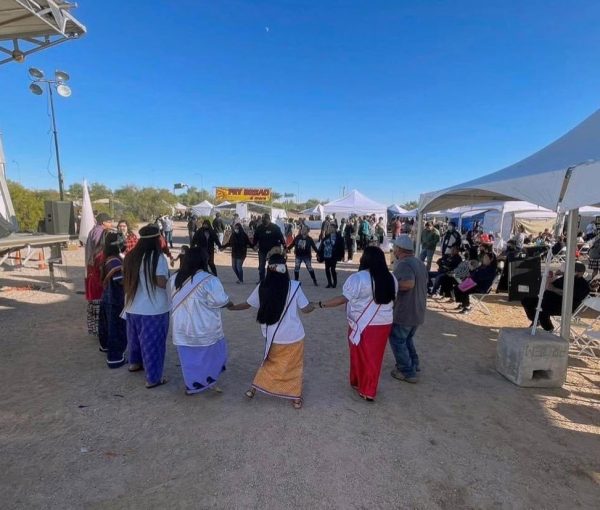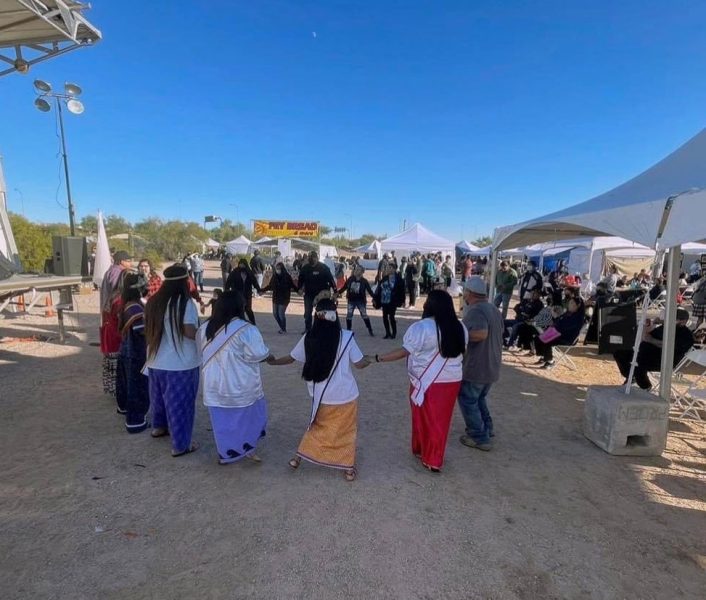
The Enduring Pulse: How Contemporary O’odham Social Dance Music Keeps a Culture Alive
Beneath the vast expanse of the Sonoran Desert sky, where ancient saguaros stand sentinel and the sun bakes the earth into a palette of ochre and rust, a vibrant sound reverberates—the contemporary O’odham social dance music tradition. It’s a sound that has defied centuries of colonial pressures, adapted with remarkable agility, and continues to be the pulsating heart of O’odham communities across southern Arizona and northern Sonora. More than just entertainment, this music, often known as "Waila" or "Chicken Scratch," is a living testament to cultural resilience, an intergenerational bridge, and an unwavering declaration of identity.
To understand its contemporary vitality, one must first acknowledge its deep roots. The O’odham people—comprising the Tohono O’odham, Akimel O’odham (Pima), Hia-C’ed O’odham (Sand Papago), and Maricopa—have a rich heritage of song and dance, traditionally integral to ceremonies, storytelling, and daily life. Early European contact introduced new instruments and melodic structures. Spanish missionaries and later Mexican and Anglo settlers brought the fiddle, guitar, and the lively rhythms of European social dances like the polka, mazurka, and two-step. The O’odham, with their characteristic adaptability, didn’t simply adopt these; they transformed them, weaving them into a distinctive musical fabric that became uniquely their own.
By the early 20th century, a new style began to coalesce. The fiddle was gradually joined and then often supplanted by the accordion, its bellows breathing a new, powerful voice into the ensemble. Guitars, bass, and drums rounded out the core, creating a sound that was at once familiar and utterly fresh. This was Waila, a term believed to be derived from the Spanish word "bailar" (to dance), signifying its primary purpose. The colloquial "Chicken Scratch," a descriptive moniker often attributed to the distinctive, quick steps of the dancers, or perhaps the staccato, pecking sound of the instruments, also gained currency, particularly among non-O’odham audiences.
Today’s Waila band is a sophisticated ensemble, typically featuring a lead accordion, often a second accordion or saxophone for harmony and counter-melody, electric guitar, electric bass, and drums. While the accordion is undeniably the star, its bright, reedy tone leading the melodic charge, the interplay between instruments is key. The guitar provides rhythmic accompaniment and often intricate fills, the bass lays down a driving, foundational groove, and the drums propel the dancers with a steady, irresistible beat. The repertoire is vast, a dynamic blend of traditional O’odham compositions, adapted Mexican corridos, polkas, cumbias, and even country-western tunes, all filtered through the unmistakable Waila aesthetic. The music is predominantly instrumental, allowing the melodies and rhythms to speak for themselves, inviting immediate engagement from the dancers.
The true essence of contemporary O’odham social dance music lies not just in its sound, but in its function. It is the indispensable soundtrack to O’odham life. From birthdays, baptisms, and weddings to community feast days, rodeos, and tribal celebrations, Waila is the glue that binds. These gatherings are vibrant, multi-generational affairs where infants are cradled in arms to the rhythm, teenagers shyly take to the floor, and elders glide with practiced grace. "When the Waila music starts, it’s like a signal," explains Delia Osife, a Tohono O’odham elder. "It tells everyone, ‘Come together, celebrate, remember who you are.’ It’s more than just a party; it’s our culture dancing."

This social dimension is crucial. In an increasingly globalized world, Waila serves as a powerful anchor for O’odham identity. It provides a shared cultural experience that transcends modern distractions and reaffirms community bonds. For young people, learning to play Waila instruments or dance to its rhythms is often a profound connection to their heritage. It’s a living tradition passed down not just through formal instruction, but through osmosis—by listening, observing, and participating from childhood. The music encourages social interaction, courtship, and familial connection, strengthening the fabric of the community one dance step at a time.
The contemporary landscape for Waila is one of both steadfast preservation and vibrant innovation. While classic bands like The Joaquin Brothers and Southern Scratch remain revered, a new generation of musicians is ensuring the tradition’s future. Younger artists are embracing modern recording techniques, producing albums that reach wider audiences through digital platforms. They experiment with instrumentation, occasionally incorporating synthesizers or more complex rhythmic patterns, yet always maintaining the core Waila sound. This balance between honoring tradition and allowing for creative evolution is vital.
One fascinating aspect of its contemporary appeal is its growing recognition beyond O’odham lands. Waila bands are increasingly invited to perform at folk festivals, world music stages, and cultural events across the Southwest and beyond. This exposure brings new listeners and admirers, but it also raises questions about authenticity and the potential for commercialization. For many O’odham musicians, the primary purpose remains serving their community, with broader recognition being a welcome, but secondary, outcome. "We play for our people first," says Robert Johnson, a young accordionist from the Gila River Indian Community. "But it’s great when others hear it and feel the energy too. It shows that our culture isn’t just surviving; it’s thriving and reaching out."
Challenges persist, of course. The influence of mainstream music, the loss of elder musicians who carry vast repositories of knowledge, and the ongoing struggle for tribal sovereignty and economic stability all impact cultural practices. Yet, Waila continues to adapt and flourish. Music programs in tribal schools, community-sponsored jam sessions, and the sheer joy and cultural pride associated with the music ensure its perpetuation. The ability of the O’odham people to absorb external influences, transform them, and make them uniquely their own is a hallmark of their resilience, and Waila music is arguably its most joyful expression.
The dance itself is as central as the music. Partners move in a loose, often circular formation, following the infectious rhythm. While there are specific steps for polkas, cumbias, and two-steps, the emphasis is on fluid movement and social interaction rather than rigid choreography. It’s an energetic, communal experience where laughter and conversation mingle with the melodies, creating an atmosphere of shared joy and belonging.
In essence, contemporary O’odham social dance music is a dynamic cultural ecosystem. It is a powerful narrative told through sound, echoing the past, resonating in the present, and confidently striding into the future. It demonstrates that tradition is not static, but a living, breathing entity that evolves while retaining its fundamental spirit. As the sun sets over the desert, casting long shadows across the land, the vibrant sounds of Waila will continue to rise, a testament to the enduring pulse of the O’odham people, their identity, and their unwavering spirit of celebration.



